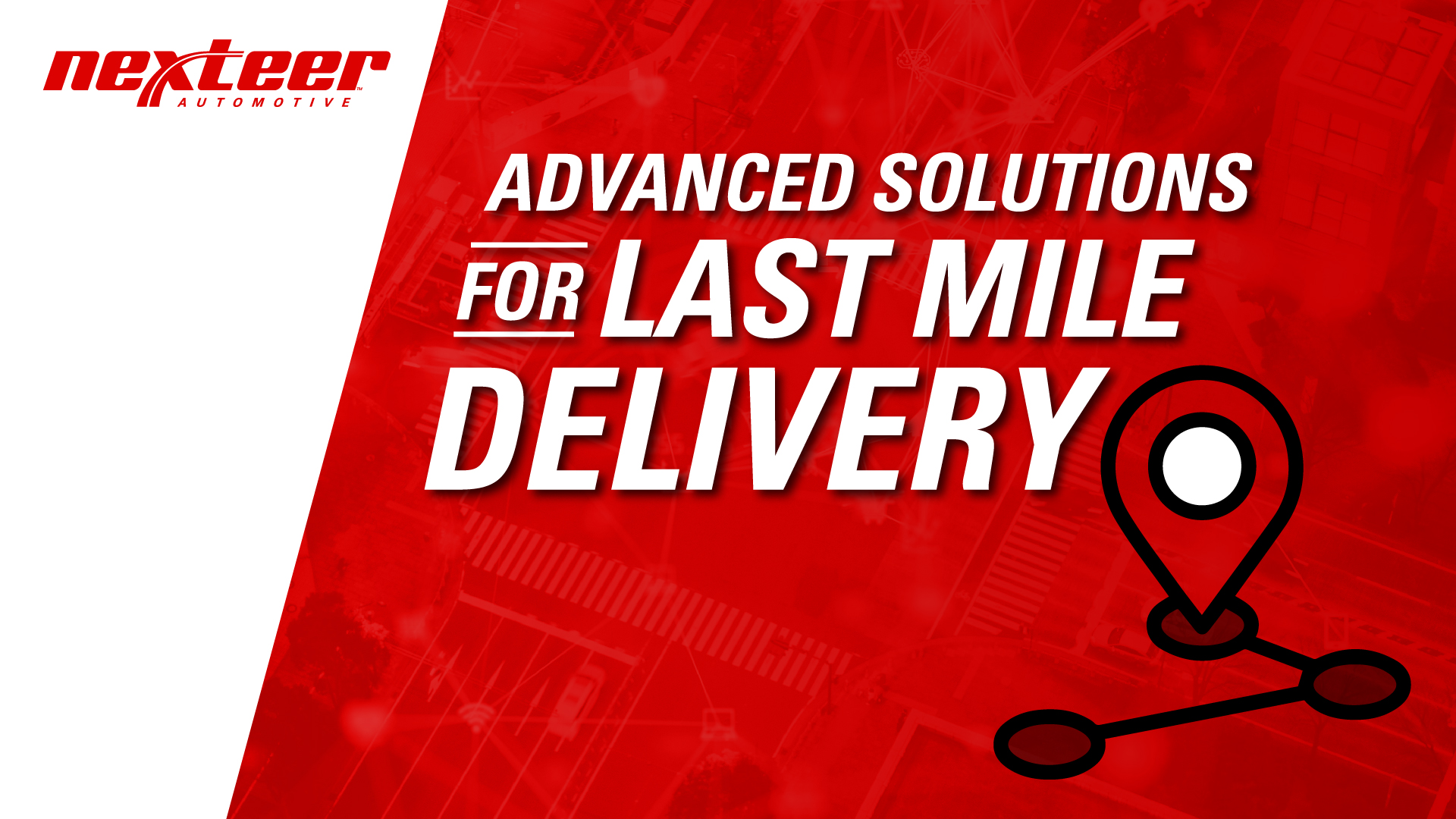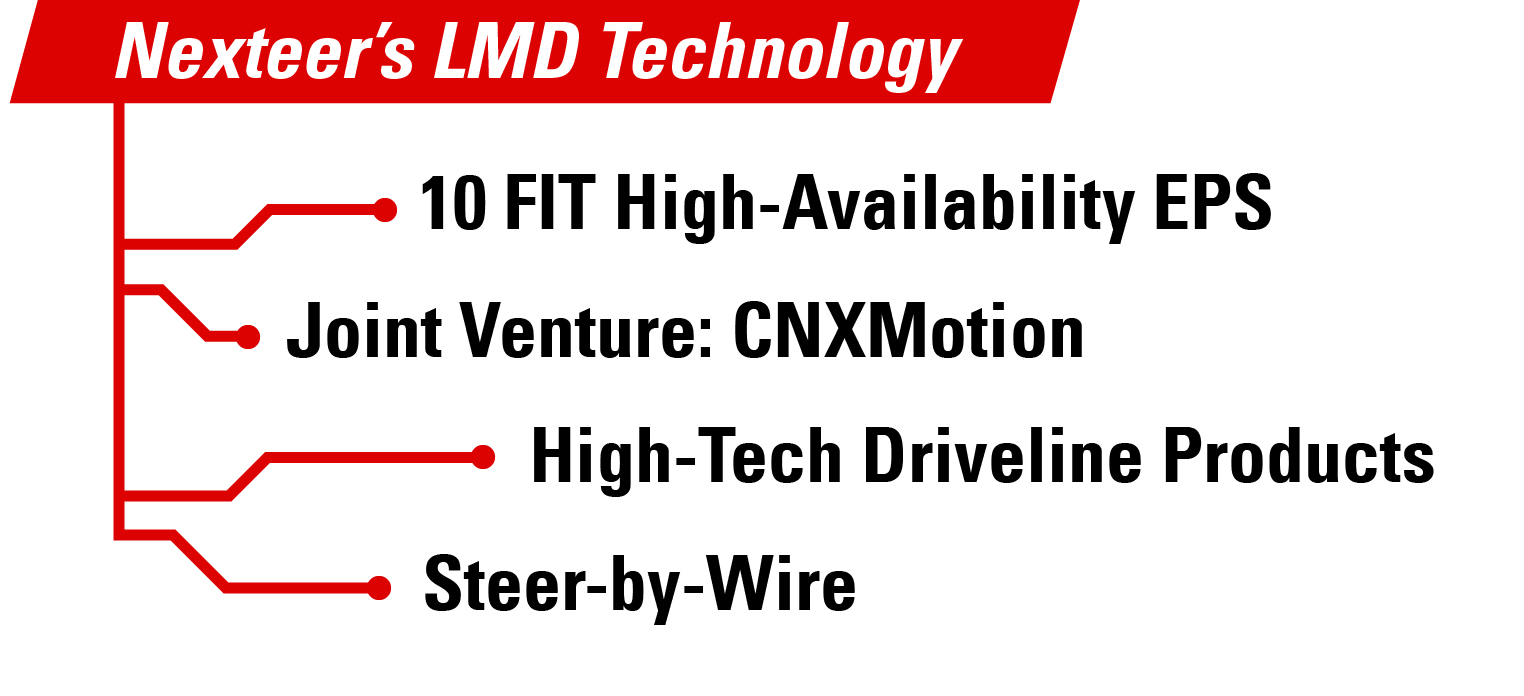Advanced Solutions for Last Mile Delivery
November 12, 2020

With online shopping at an all-time high, the need for new and innovative forms of shipping and transportation are also rising – especially ones that enable short delivery times because consumers increasingly expect delivery in two days or less.
Last mile delivery (LMD) is the final step in delivery and often the most expensive, complicated and time-consuming portion of the process as orders come highly customized to each person and location. This presents a unique opportunity for businesses to innovate and adapt their logistics.
As one of the first applications of Mobility as a Service (MaaS), LMD is automating local delivery of goods and creating the need for more intelligent steering technology and durable driveline components in delivery vehicles. To meet the unique demands of these vehicles, automakers are working to improve efficiency and automation, areas of expertise for Nexteer.

Current Solutions to a Future Concept
From large corporations to restaurants, companies are all looking to the automotive industry for a specialty mode of transportation for that last mile delivery. According to McKinsey, LMD accounts for 53% of shipping costs. However, semi-autonomous and autonomous vehicles can reduce delivery costs in cities by approximately 10 to 40%.
While there are many stages to accomplish fully autonomous delivery, methods are being tested right now that will provide solutions to current constraints. The spectrum of LMD solutions currently being worked on ranges from four-wheel vehicles to a small vehicle that looks like a cooler on wheels to robotic dogs that can go up and down steps.
LMD specialists are focused on the high-level application and turn to automotive suppliers, like Nexteer, for mature subsystems that have been proven reliable for large vehicles that travel at higher speeds.
The technology needed for an LMD application depends on several factors, such as the maximum vehicle speed and expected time on the road. For example, ultra-low speed vehicles in inner cities may only need a reliable way to “stop in place”, whereas medium speed applications that use public roads need high availability lateral control (steering). As another example, autonomous delivery services will require higher durability in Steering & Driveline systems due to a massive increase of driving hours for shared fleet vehicles in shorter time periods. Suppliers, like Nexteer, are carefully adapting our products to fit these needs.
Additionally, these trends present an opportunity for early introduction of Level 5 advanced steering systems, where drivers are not necessary. While various levels of autonomy are also being used, fully autonomous delivery provides a blueprint for future development.
This is made possible by advanced steering software that enables today’s advanced driver-assistance systems (ADAS) like park assist, lane keeping, lane departure warning and traffic jam assist. These features are programmed to make vehicles safer and more intelligent to enable fully automated driving.
Nexteer’s LMD Technology
Nexteer’s focus on steering technology to support initial versions of MaaS and LMD services begins with low speed vehicles traveling highly controlled and managed navigation routes (also known as “geo fencing”). Our Global Technical Center and test track in Saginaw, Michigan provide an ideal landscape to test automated functionality and the Nexteer technologies that enable various levels of autonomy.
Nexteer technology supporting LMD and automated driving include:
- Low FIT steering systems, like Nexteer’s 10 FIT High Availability EPS, are safety-critical for ADAS Levels 3+ applications in LMD.
- Our joint venture with Continental, CNXMotion, which allows us to explore technology to enable autonomous shuttles for both people and goods.
- Our Steer-by-Wire technology, which replaces the mechanical connection between the steering wheel and road wheels with advanced software connections, enables a new generation of semi and fully automated vehicles for LMD and beyond.
- New high-tech driveline products enhance durability and performance by managing increased wear and tear expected for shared and automated delivery vehicles.
While many of these implementations seem futuristic, Nexteer’s advances in steering and driveline technology are helping move our industry safely toward innovative LMD applications and automated driving every day.





